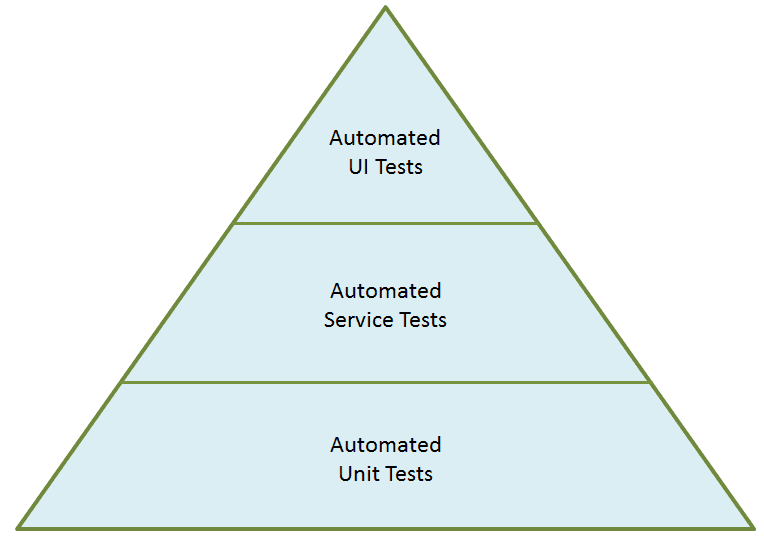In the ever-evolving surroundings of software growth, the significance of unit testing can not be overstated. Product tests verify that will individual units regarding code function correctly, ensuring software reliability and robustness. On important site , traditional unit screening approaches often deal with challenges such while incomplete test insurance coverage, limited ability to adapt to computer code changes, and time consuming manual processes. Enter Artificial Intelligence (AI) and its transformative potential in unit test automation. This article explores how AI-powered unit test out automation is improving code coverage in addition to reducing bugs, supplying insights into its rewards, technologies, and execution strategies.
The battle associated with Traditional Unit Testing
Traditional unit assessment relies heavily about manual test development repairs and maintanance, which may be time-consuming plus prone to human being error. Common issues include:
Incomplete Test out Coverage: Manual tests often miss border cases or unexpected scenarios, leading in order to incomplete coverage regarding the codebase.
Code Changes and Upkeep: As code advances, existing test conditions could become obsolete or even neglect to cover new functionality, requiring regular updates and preservation.
Time-Consuming: Writing plus maintaining tests physically is labor-intensive, potentially slowing down enhancement cycles and improving time-to-market.
AI-Powered Device Test Automation: A Game Changer
AI-powered device test automation tackles these challenges simply by leveraging advanced algorithms and machine learning to enhance test creation, execution, and maintenance. Here’s how AI transforms unit testing:
1. Enhanced Test Protection
AI codes analyze codebases to identify gaps in test coverage that traditional methods may miss. By becoming familiar with code structure in addition to logic, AI equipment can generate checks that cover the broader range of scenarios, including edge cases and intricate interactions. AI designs can also predict potential failure points structured on historical information and code shifts, ensuring that test out coverage is broad and up-to-date.
Instance: Tools like Analyze. ai use equipment learning to immediately generate tests simply by getting together with the app in a manner similar to human testers. This strategy helps identify essential paths and scenarios that need affirmation, improving overall test out coverage.
2. Smart Test Generation
AI-powered tools can instantly generate unit testing in line with the codebase’s design and functionality. These types of tools analyze the code to comprehend it is logic, dependencies, and potential failure items, then create testing that simulate various scenarios. This decreases the need with regard to manual test generation and ensures that tests are lined up with the genuine code.
Example: Microsoft’s NNI (Neural System Intelligence) and Google’s AutoML are examples of platforms that may automate test era by utilizing machine mastering ways to identify plus validate code functionality.
3. Adaptive Assessment
AI systems constantly study from new codes changes and test results, adapting their very own testing strategies accordingly. This adaptive method helps maintain the relevance of tests as the codebase evolves, reducing the need for manual test revisions and ensuring that will tests remain successful with time.
Example: Tools like Testim. io leverage machine understanding to adapt tests automatically based on program code changes, reducing the particular effort required in order to update and preserve test cases.
5. Bug Detection plus Prediction
AI might enhance bug recognition by analyzing styles and anomalies inside test results. Equipment learning models can identify unusual conduct or deviations by expected outcomes, flagging potential bugs early on in the advancement process. Additionally, AJE can predict parts of the code which are likely to present bugs based in historical data and even code changes.
Illustration: Code analysis equipment like DeepCode and even SonarQube use AJAI to detect code smells, vulnerabilities, and potential bugs, offering actionable insights with regard to developers to deal with problems before they impact the software.
five. Optimization of Test Suites
AI-powered instruments can optimize test suites by figuring out redundant or useless tests and indicating improvements. This helps to ensure that the test selection remains efficient in addition to dedicated to high-priority situations, reducing execution moment and resource consumption.
Example: Tools want Testim. io and even Applitools leverage AI to analyze test execution results and even optimize test suites, ensuring that checks are relevant and even provide maximum insurance.
Implementing AI-Powered Product Test Automation
In order to leverage the key benefits of AI-powered unit test motorisation, organizations should think about the following steps:
one. Evaluate AI Equipment
Choose AI-powered unit testing tools that align with your own development environment and requirements. Consider factors for instance ease involving integration, compatibility with existing testing frames, and the ability to generate and keep tests effectively.
two. Integrate with CI/CD Sewerlines
Integrate AI-powered testing tools directly into your Continuous Integration/Continuous Deployment (CI/CD) sewerlines to automate test execution and suggestions loops. This assures that tests are usually run automatically within the development process, supplying timely insights and even facilitating rapid opinions.
3. Train in addition to Customize
Customize AJAI tools to go well with your specific codebase and testing needs. This may include training machine mastering models on your code and check data to improve their accuracy in addition to relevance. Continuous teaching and refinement involving AI models can enhance their effectiveness over time.
4. Monitor and Overview
Regularly monitor the particular performance of AI-powered testing tools plus review their gains. Make certain that the generated tests and irritate detections align using expected outcomes and even adjust the AJAI models as needed to maintain accuracy and reliability and reliability.
Bottom line
AI-powered unit test out automation is changing the way many of us approach software assessment, offering significant benefits in code insurance coverage, bug detection, plus test maintenance. Simply by leveraging advanced algorithms and machine understanding, organizations can enhance the efficiency and performance of their tests processes, ultimately leading to higher-quality computer software and faster growth cycles. As AJE technology is constantly on the enhance, its role inside of unit test automation is likely to be able to grow, providing still greater benefits to software development teams and adding to the overall success society projects.
